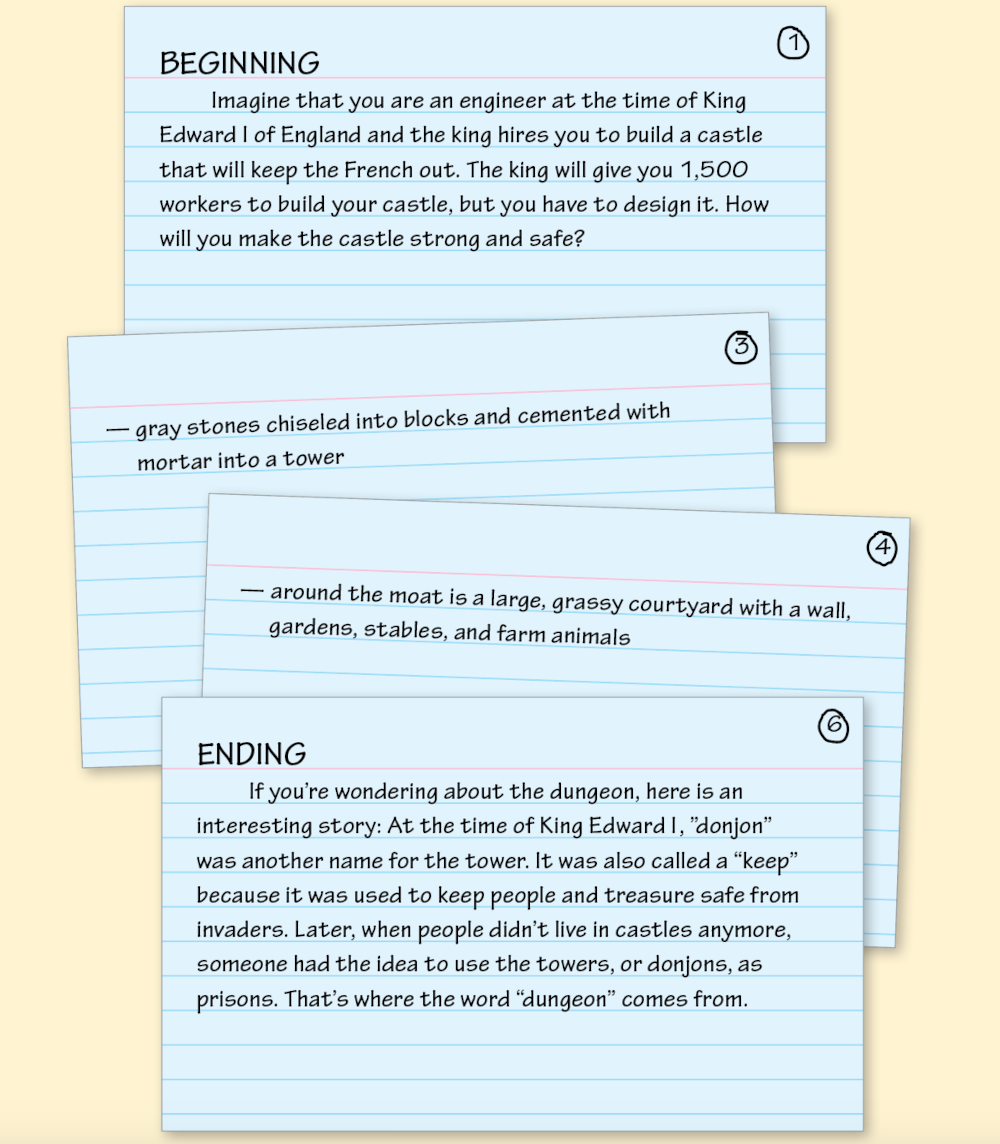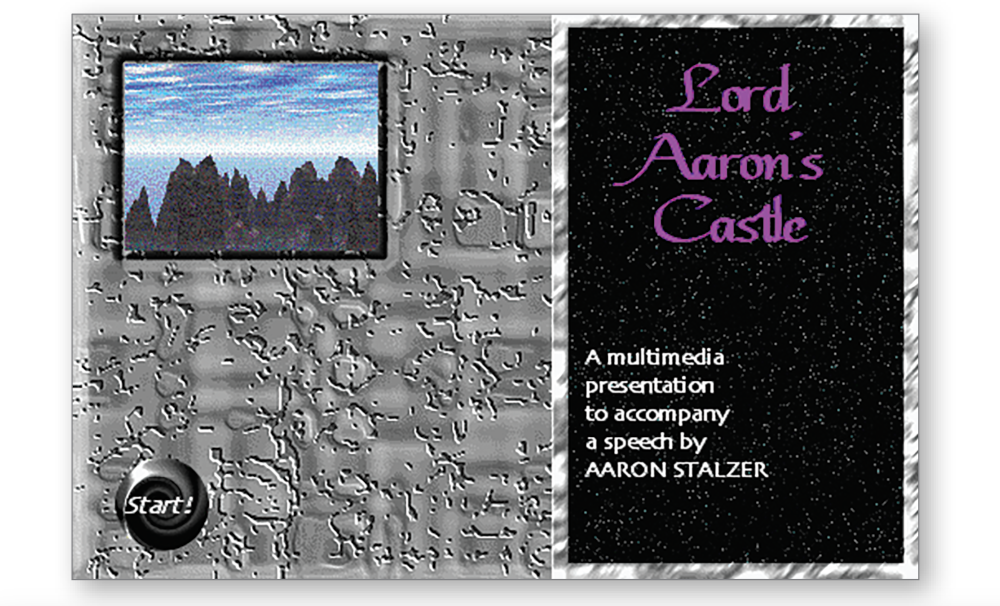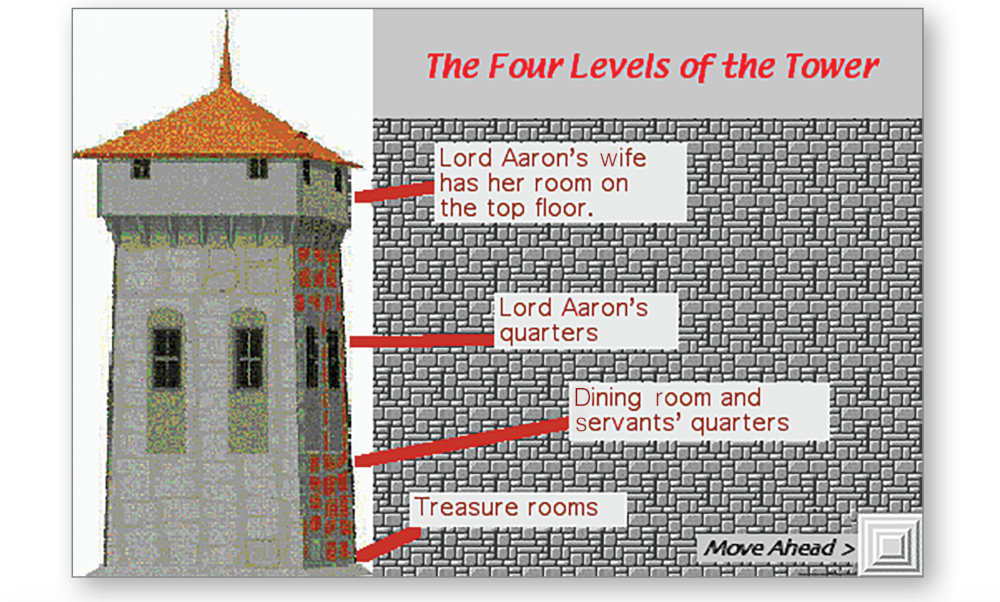WOC 417
Page 417

Preparing a Speech
Okay, so you’ve been assigned to deliver a speech. What now? You might give a speech for one of three main reasons:
- To Inform: You might explain the history of peanut butter.
- To Persuade: You might argue what jelly is best with peanut butter.
- To Demonstrate: You might show how to make a great peanut butter and jelly sandwich.
What reason do you have for making a speech? Think of a fascinating topic you would like to explain, or an important stand you could persuade classmates to take, or a key process you could demonstrate.
This chapter will help you choose an interesting topic and create and deliver an excellent speech!
What’s Ahead
WOC 418
Page 418
Writing Guidelines
Prewriting ■ Planning Your Speech
To get started, you need to understand the purpose of your speech, select a specific topic, and collect interesting details.
Understanding Your Purpose
There are three main purposes for formal speaking: to inform, to persuade, and to demonstrate.
- Informing: If your purpose is to inform, you are preparing an informative speech. (Collect plenty of details.)
- Persuading: If your purpose is to argue for or against something, you are preparing a persuasive speech. (Develop a convincing and logical argument. See pages 193–198.)
- Demonstrating: If your purpose is to show how to do something or to show how something works, you are preparing a demonstration speech. (Put together a clear explanation.)
Selecting a Specific Topic
A good speech starts with a good topic—one that you think will interest your audience. Here are some important points to consider:
- Know your topic: Either know your topic well or be able to learn about it in a short time.
- Choose the right topic: Check that your topic meets the requirements (and purpose) of the assignment.
- Choose a specific topic: Pick a topic that is specific enough to cover in the time allowed for your speech.

WOC 419
Page 419
Collecting Interesting Details
Listed below are different sources of information for your research. Always consult as many sources as time permits.
- Tap your memory: If your speech is based on an experience, write down the facts, details, and feelings as you remember them.
- Talk with people: Discuss your subject with a variety of people who may be able to provide details from their own experiences.
- Get firsthand experience: Experiencing (or trying out) your subject is especially important for demonstration speeches.
- Explore the Internet: Check out appropriate Web sites, blogs, and podcasts for information.
- Search the library: Make sure to check different library resources, including books, magazines, journals, and videos.

Points to Remember
- Gather more facts and details than you need. You can decide which ones to use as you write your speech.
- Take good notes and write down all of the sources of your information. You can write each main point or fact on a separate note card. This will help you later on when you are ready to write your speech. (See pages 420–421.) As an alternative, you could complete a gathering grid.
- Look for photographs, maps, models, artifacts, charts, and other visual aids. Showing these items can make any speech more interesting and helpful, especially a demonstration speech.
- Create your own graphics or charts if you can’t find ones that meet your needs. (See pages 425–426.)
WOC 420
Page 420
Writing ■ Organizing Your Speech
No matter what kind of speech you are giving or what your topic is, you will want to place all your ideas and details in the best possible order. The best way to organize your details is with a list, outline, or graphic organizer.
- A list is just that—a simple listing of your details in the order in which you want them to occur. A list may be all you need to organize a short speech.
- An outline is recommended if your speech is long or the topic is complicated. In an outline, ideas are listed from general to specific, with two or more ideas per level. If you have a I, you must have at least a II. If you have an A, you must have at least a B. (See page 304 for a sample outline.)
- A graphic organizer will help you organize your details visually so they are easier to arrange and remember.
Creating an Attention-Getting Beginning
The beginning of your speech must get your listeners’ attention and tell what your speech is about. Here are five ways to begin:
- Ask a question:
“How many of you have . . .” - Give a surprising fact::
“You may find this hard to believe, but . . .” - Tell an interesting or a surprising story:
“Over 800 years ago . . .” - Ask listeners to imagine something::
“I want everyone to imagine . . .” - Repeat a famous quotation::
“A famous king once said . . .”
In the speech on page 423, student Aaron Stalzer asks listeners to imagine something; then he asks a question that reveals his topic.

WOC 421

Page 421
Writing a Convincing Middle Part
Once you decide how to begin, turn your attention to the body of your speech. If you used note cards to gather details, move them around until you get everything in the best order. (See page 422 for help.)
As you write, turn each fact or detail into an interesting, smooth-reading sentence. Explain or describe each part of your topic clearly so that your audience can follow along easily and enjoy what you say.
Preparing a Strong Ending
Your ending should be just as interesting as the beginning. It should share a final idea that will keep the topic in your listeners’ thoughts. Here are different ways to end a speech:
- Tell one last interesting fact or story. (This is a good way to end an informative speech.)
- Explain why the topic is important. (This is a good way to end a persuasive speech.)
- Sum up the most important ideas in your speech. (This is a good way to end a demonstration speech.)
Aaron ended his speech with an interesting story about castles.

WOC 422
Page 422
Note Cards
One way to present a speech is to use note cards. Aaron wrote out the full beginning and ending parts on cards. The other cards contained only main ideas. (Not all cards are shown below.)

WOC 423
Page 423
Speech
When you want to deliver a speech word for word, you can write it out as a complete manuscript. Here is Aaron’s speech word for word.
Lord Aaron’s Castle
Beginning:
The writer draws the listener in and names the subject (underlined). Imagine that you are an engineer at the time of King Edward I of England and the king hires you to build a castle that will keep the French out. The king will give you 1,500 workers to build your castle, but you have to design it. How will you make the castle strong and safe?
Middle:
Each middle paragraph covers a main point. Based on the latest building techniques of the time, you’ve created the following design. We’ll call it Lord Aaron’s Castle, and it will be located in Wales.
The castle rises from the top of a hill, so its defenders can easily see enemies approaching. Slabs of gray stone are chiseled into bricks and cemented with mortar to build a mighty tower, the heart of the castle. The tower is divided into four levels or stories. Lord Aaron’s wife will have her room on the top floor. Below that will be the lord’s quarters, and below that the dining rooms and servants’ quarters, and then the treasure rooms.
The tower is surrounded by a 10-foot-deep moat that can be crossed only when a heavy wooden drawbridge is lowered. When it is raised, enemies have no way to get across.
Around the moat is a large, grassy courtyard with a well (so the defenders will have water if the enemy lays siege to the castle), gardens, horse stables, and farm animals. Surrounding the courtyard is a 10-foot-high stone wall with only one gate. This gate is on a different side of the tower than the drawbridge. So if enemies do get through the gate, they must still work to get into the tower. As they walk or ride around the courtyard toward the drawbridge, defending soldiers can shoot arrows down at them.
Ending:
The writer closes with an interesting story. If you’re wondering about the dungeon, here is an interesting story: At the time of King Edward I, “donjon” was another name for the tower. It was also called a “keep” because it was used to keep people and treasure safe from invaders. Later, when people didn’t live in castles anymore, someone had the idea to use the towers, or donjons, as prisons. That’s where the word “dungeon” comes from.
WOC 424
Page 424
Revising ■ and Editing ■ Refining Your Speech
Making a Final Copy
- Type your speech or neatly write it out.
- If you type it in, make sure to use a type font that is easy to read.
- Double- or triple-space and use wide margins.
- Never run a sentence from one page to another.
- Never use abbreviations unless you plan to say them as they are written. For example, don’t write “A.M.” when you intend to say “morning.”
- Number each page to keep things in order.
Practicing Your Speech
- Start practicing your speech at least two days ahead of time.
- Practice by yourself at first. If possible, record yourself.
- Then get friends or family members to listen to your speech. (Ask for honest, constructive advice.)
- Practice until you know your speech inside and out.
- Add visual aids (photographs, maps, charts) to make your topic more interesting.
Giving Your Speech
- Stand straight and tall.
- Speak loudly and clearly.
- Take your time, and use your voice to add color and interest to your speech.
- Look up as often as you can. (You don’t have to make direct eye contact if that makes you nervous. Just scan the audience as you look up.)
- Use your hands in a planned way. At the very least, hold your note cards or written speech. But don’t make any nervous movements with your hands.
- Keep your feet firmly on the floor. Don’t sway from side to side.
- Show interest in your topic all the way through your speech.
- Avoid vocal pitfalls, such as repeating “uh,” “um,” or “like” instead of pausing between ideas.
WOC 425
Page 425
Creating a Multimedia Presentation
In addition to using visual aids with your speech, you can also include a video or create a multimedia presentation using a slide show of images and words. You might even record your voice and include it with the slide show to create an interactive report or digital story. Follow these tips when creating a multimedia presentation.
- Create a title slide that identifies your presentation and helps your reader understand what it is about.

- Combine words and images to make your ideas clear.

- Focus on one main point per slide so that your audience does not get overwhelmed.

WOC 426
Page 426
- Use readable fonts so that even people in the back of the room (or people with small computer monitors) can see what you have written.

- Use diagrams when appropriate to make complex information clear.

- Pace your words and images so the audience has enough time to see each slide, but not enough time to become bored.
